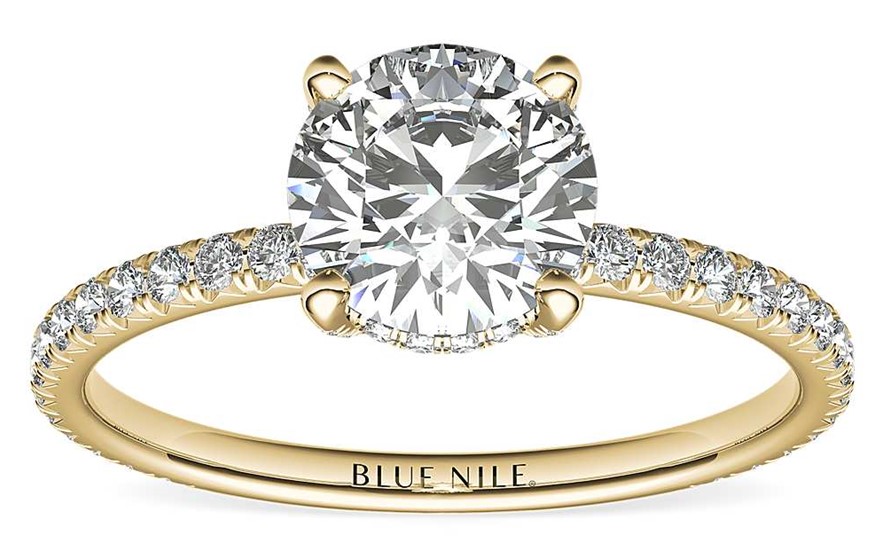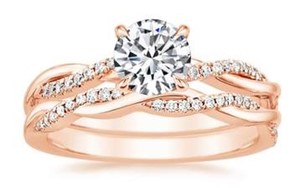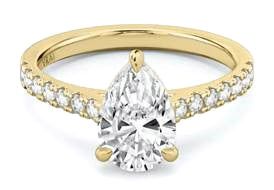Covid 19 & jewelry insurance
We know the pandemic is changing pretty much every corner of our lives. As holiday gift-giving approaches, this is a good time to look at how the jewelry insurance corner is being affected.
Despite Covid, people are still falling in love and getting married. They are still likely to want diamond engagement rings, so we feel sure that bridal jewelry will continue to be the most frequent insurable jewelry agents and underwriters see.
But with jobs lost or work hours cut, many buyers are looking for lower-priced jewelry. Retailers, struggling to stay afloat in a time of decreased sales, can meet the new demand in a couple of ways. As price becomes more central to a purchase, retailers may begin to carry lab-made diamonds, or they may offer mined diamonds of lower quality than they previously carried.
Lab-Grown Diamonds
Lab-made diamonds got off to a slow start, as many retailers resisted them and promoted the traditional allure of diamonds from the earth. But now, as diamonds from a lab are more accepted by the public, and as their lower prices have become a major draw, more and more retailers are carrying lab-made as well as mined diamonds. It’s a good strategy for both online and brick-and-mortar sellers.
Insurer alerts
- Check and double check that a diamond is identified as either mined or lab-grown, as there is a significant value difference.
- If a lab-grown diamond is insured at the value of a mined diamond, the insured will overpay on premiums and the insurer could very well overpay on a claim.
- Even designer jewelry may use lab-made stones. A designer may have two lines, one with mined diamond and one with lab-grown stones.
- Jewelry of significant value should have a report from a reliable independent grading lab, such as GIA.
Mined Diamonds
The price of mined diamond has always varied greatly according to the quality of the stone. One way to supply more affordable jewelry is to offer pieces—an engagement ring, for example--with diamonds of lower color and clarity. Most consumers are not likely to notice a visual difference between stones a grade or two apart. This can be a happy solution for buyers on a more limited budget.
Insurer alerts
- Be sure the appraisal give details of the diamond’s qualities.
- Be sure the appraisal comes from a reliable appraiser independent of the seller.
- Be especially cautious about jewelry purchased at online shopping sites, as such outlets often omit details that greatly affect the jewelry’s valuation.
- Diamonds of significant value should have a report from a reliable independent grading lab, such as GIA.
FOR AGENTS & UNDERWRITERS
Be alert to brand names. Some names signify a diamond made in a lab, or a retailer that sells only lab-made gems.
If there are names on the docs that you don’t recognize, check them out on the web.
Lab-made gems are sometimes called synthetic, though this term is going out of use. Synthetic, or lab-made, diamonds are real diamond.
Diamond simulants are not diamond. They are made of some other material, such as glass or cubic zirconia (CZ), that may superficially resemble diamond. Diamond Nexus is an example of a brand name that denotes diamond simulants.
A diamond of one carat or more should have a grading report from a reliable lab. The report should state whether the gem is mined (also called "natural") or lab-made, in addition to giving details on the 4 Cs and any gem treatments.
We recommend the following labs, and you can use this links to verify reports you receive. A grading lab has the technology to determine whether a diamond is mined or lab-grown.
GIA Report Check
AGS Report Verification
GCAL Certificate Search
The best appraisal includes the JISO 78/79 appraisal form and is written by a qualified gemologist (GG, FGA+, or equivalent), preferably one who has additional insurance appraisal training. One course offering such additional training is the Certified Insurance Appraiser™ (CIA) course of the Jewelry Insurance Appraisal Institute.
FOR ADJUSTERS
Mined diamond has a substantially higher valuation than lab-made diamond. If the appraisal or lab report does not explicitly state whether the gem is mined or lab-grown, use every means possible to determine which it is.
Take note of brand names on the docs, as some names indicate producers or retailers of lab-made stones. If there are brand names on the docs that you don’t recognize, check them out on the web.
Sales receipts and proof-of-payment docs are often helpful in establishing whether a diamond is mined or lab-made. These docs may also provide other information — such as disclaimers, limitations and conditions — not found on an appraisal!
On a damage claim, ALWAYS have the jewelry examined in a gem lab that has reasonable equipment for the job and is operated by a trained gemologist (GG, FGA+ or equivalent), preferably one who has additional insurance appraisal training, such as a Certified Insurance Appraiser™.
©2000-2025, JCRS Inland Marine Solutions, Inc. All Rights Reserved. www.jcrs.com




